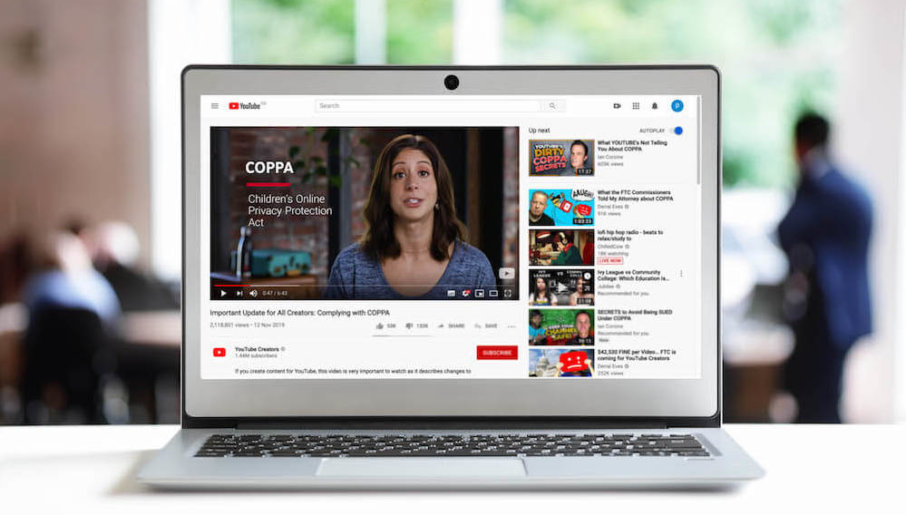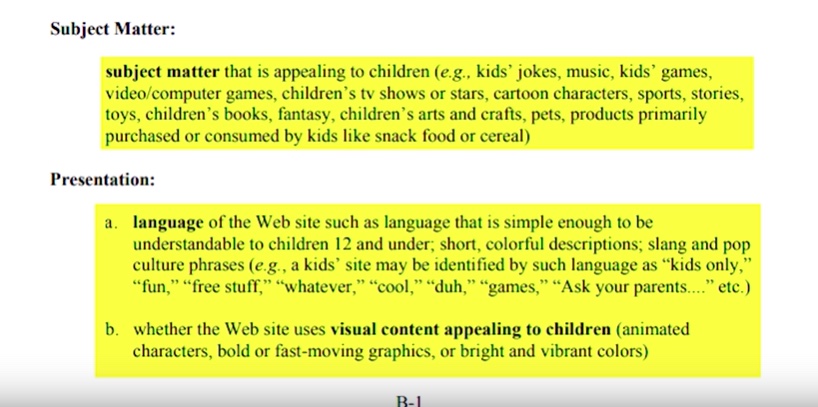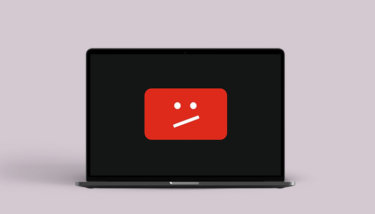Grown-ups love Minecraft, Deadpool, and slime as much as any average kid out there.
Unfortunately for YouTubers, a love for cartoons and video games might now mean getting into trouble with the law and facing up to $42K in fines.
Say goodbye to the good ol’ days – the YouTube we know and love could be reaching the end of its reign.
The video giant, once a safe space for underdogs and creatives of all backgrounds to share their talents and expertise, has become more rigid in how it handles its varied roster of creators in compliance with federal law.
From demonetization caused by multiple adpocalypses to scandals surrounding disturbing videos targeting children, this isn’t the first time YouTube’s come under fire for its content.
Now, many of its creators are rightfully freaking out over its latest announcement.
Starting January 2020, YouTubers may face up to $42 K in fines per video if their content is considered attractive to children under the age of 13.
But wait a minute – How exactly did we get here?
Why are YouTube creatives being punished? And how can they survive this radical shift in the government’s definition of children’s content, if this ruling takes effect by 2020?
We’ll break down this entire mess for you.
Let’s take it back to the start:
The Children’s Online Privacy Protection Act (COPPA) was established in 1998 as the internet was rapidly becoming a household staple.
It was created in response to deceptive marketing techniques targeting children, such as promising gifts or access to a chat room in exchange for their personal information. Marketers would later sell this information to third parties.
This sparked suspicion that sex offenders could easily buy this information directly from these parties.
COPPA’s main goal is to keep children safe. It requires that digital entities obtain consent from a child’s parent or guardian if they intend to market to them.
The act was updated in 2013, broadening its scope to tackle the widespread use of smartphones and social media by children.
This fall, the Federal Trade Commission (FTC) served YouTube with a $170 million fine for violating COPPA, claiming the video company illegally collected information on users under the age of 13 for its personalized ads without consent from their parents.
Personalized ads are based on user activity. YouTube uses these to keep recommending you content you might enjoy. Its other type of ads is contextual, these don’t rely on user data and are rather tailored to the video itself.
YouTube’s fine is the largest COPPA fee to date, mainly due to its growing popularity among children since its inception.
Earlier this year, TikTok was also served by the FTC with a $5.7 million fee for the same issue.
This move from the FTC has cornered YouTube into enforcing newer, stricter rules and guidelines upon users to avoid any more fines:
To comply with COPPA, YouTube is now requiring its users to identify if their own channels and videos are made for, or may be attractive to, children under 13.
If any content is considered kid-friendly, it will no longer be eligible for personalized ad revenue.
Videos that are not labeled correctly under the FTC’s standards could make the video owner vulnerable to massive fines of up to $42K per incorrectly-labeled video.
This is not YouTube’s decision, as they are merely trying to avoid any further legal trouble.
Contextualized ads that don’t gather personal information will still be enabled for user-identified kid-friendly videos, however personalized ads currently make up to 90% of YouTube creators’ income — so YouTube and its community are both taking massive hits from this.
But what even counts as kids’ content in the first place?
Kids, they just love cereal and cartoons…
So, this is where things get a little vague, to say the least.
COPPA defines kids’ content based on the following factors:
- The subject matter of the service, e.g.: kid-friendly topics and products like “snacks” and cereal – yes, cereal
- The video’s visual content
- Whether or not it has animated characters, bright colors, or child activities
- Incentives (?)
- Music or audio in the video
- Age of the models in the video
- Presence of child celebrities or celebrities that appeal to children
- Language simple enough to be understood by children
- Slang phrases like “duh,” and “whatever”
- And whether or not the content is directed at children
For the full description of what classifies as “kids’ content,” check this official FAQ from the FTC, on section 4, or this video.
Basically anything mildly bright, fun, and eye-catching might be too risky to post online if it might attract children.
YouTube is going as far as suggesting its users should consult an attorney to help identify whether or not their content is kid-friendly.
These are all extremely nebulous, so it’s no wonder why people are panicking.
How will this affect YouTube creators?
Kids content and any content vaguely considered to be attractive to children, like gaming channels, might be at risk of these fines and disabling of personalized ads.
But it’s not just ads being removed from content fitting these standards.
Anything recognized by the FTC as attractive to kids will additionally lose many key features like having comments, info cards, end screens, stories, community feeds, notification alerts to subscribers, as well as the ability to save videos or add them to any playlists.
To top it all off, these videos will no longer be searchable on the video platform.
Yep, you won’t even be able to find them unless you go directly to the source.
This is a huge blow to channel owners, preventing them from engaging with their loyal audience and attracting new subscribers.
This also affects those who make content for more general and family-friendly audiences, such as family vloggers like J House Vlogs, since their videos feature children.
These grey areas are not only causing a great deal of stress within the YouTube community, but also stirring a big debate on whether or not these standards make any sense in the first place.
Bright colors, snack foods, and fun are not exclusively meant for children.
And, by the way, words like “fun” and “cool” are also considered part of that “child-friendly language.”
Now meet Pixel Dan.
Dan is a huge comic nerd. His channel, which has over 264,000 subscribers, is full of fascinating content like unboxings and deep-dives into his favorite action figures.
But right now, Dan is worried about the fate of his channel.
After YouTube announced their new FTC-compliant regulations, many of his followers reached out to him to ask if he was going to shut down his channel.
But Dan says he isn’t going anywhere.
He is one of many creators gearing up for this battle, not ready to stop delivering quality content.
YouTube’s automated system, however, has already marked many of his videos as “for kids”, including ones on Teenage Mutant Ninja Turtles action figures.
Dan says he will begin posting less often and steering his content away from action figure unboxings and more toward what he hopes are more “mature” topics, like vintage figurines, as these changes unfold.
On Dec 9, YouTube published a blog post response asking the FTC to give clearer COPPA guidelines for creators before these new rules are enforced starting January 1st.
In it, they acknowledged the widespread concern of creators surrounding these guidelines and agree that the FTC should be more explicit in what they consider child-directed, mixed audience or general audience content so creators in kid-attractive realms, like gaming and arts and crafts, can avoid these fees.
They also emphasized how adults enjoy child-friendly content like cartoons too, and that YouTube creators who create child-attractive content still rely on features like comments to engage with their older viewers.
What can creators do about this?
The biggest reason why these changes are so concerning is that YouTubers rely on their ad revenue, however small, as a valuable source of income.
Many YouTubers have also devoted years to their channels to cultivate an audience and develop their brands and content.
This new ruling could affect an overwhelming amount of video creators who just want to do what they love. The idea of anyone losing that is devastating.
YouTube creators are now calling on their viewers to sign a petition on Change.com calling on the FTC to save family-friendly content on the site and instead give parents the power to decide what is and isn’t kid-friendly content.
Many vloggers, including Jeremy Johnston, from the previously mentioned J House Vlogs, argue that COPPA is outdated.
Also a former practicing attorney, Johnston believes this move from the FTC is “removing parents from the equation.”
Though COPPA aims to protect children, he believes it is going too far, trying to make decisions for parents, who could simply consent to allow the personalized ads on the platform and use YouTube Kids for content that is explicitly for children, since it does not use personalized ads.
“The intent of COPPA wasn’t to make parenting decisions for parents. It was to put parents in control. Parents knowingly hand the device to their child to watch on their account. This sounds a lot like consent to me.”
This change is a clear sign that YouTubers, regardless of their targeted audience, need to brainstorm new ways to generate revenue, perhaps by establishing a more stable revenue stream.
More and more of the savvy ones are moving their focus from ad-based revenue to a more predictable and sustainable transactional model, with the most popular being membership platforms.
Why? Because these create a passive revenue stream based on their relationship with the audience and no one else. They don’t have to worry about the next ad-related scandal on YouTube influencing whether or not they’ll be able to make rent.
Streaming apps for their video memberships take this freedom even further, helping creators reach their audience wherever they may be, be it their smartphones, tablets or TVs.
This new video monetization strategy doesn’t apply just to YouTubers, but to streamers from Twitch, TikTok or any other platform that can be easily shaken down by the government.
Content creators and businesses regardless of their industry and niche can make this happen with the right game plan.
So, what’s gonna happen?
It’s not the most exciting time to be a YouTuber.
Though the video platform has fulfilled the dreams of many, its users are now worried about becoming creatively and economically displaced.
It’s no wonder why many are scrambling for ideas on how to stay afloat on the platform and wondering whether they should take their work somewhere else.
If this sounds like you, just know that yes, YouTube may not ever be the same.
But that does not mean you need to put an end to your unique content and say goodbye to your subscribers.
Just like online video regulations are shifting, so is how its creators are sharing their videos with their audiences while making a living.
For YouTubers, these changes could influence how you use the platform, no longer relying on it for revenue, but instead rethinking it as a clever marketing funnel for your own website or VOD platform.
Til’ these changes go into full effect, all you can do is plan for the worst.






